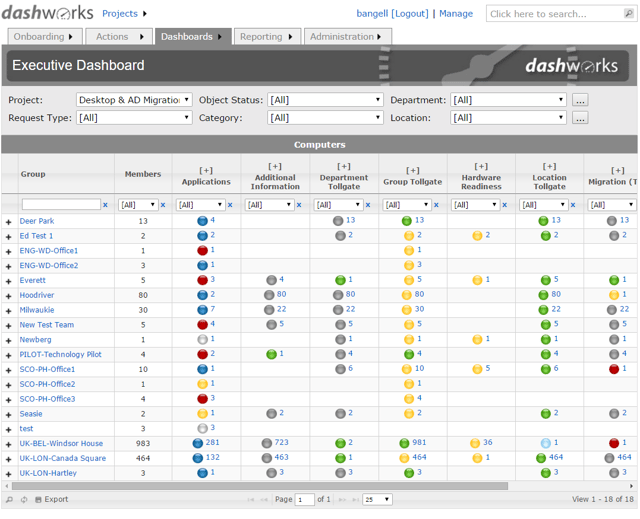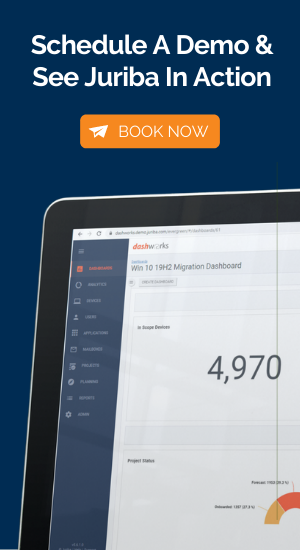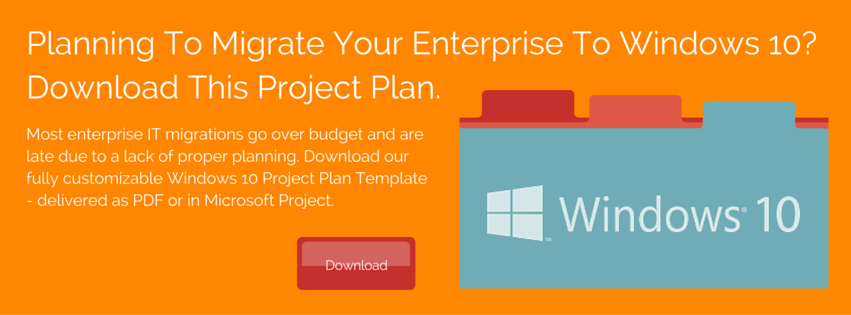It’s no secret that managing a large scale project from conception to completion can be hard — and managing the people responsible for that project can be even harder. As a project manager, you are constantly refining and honing your project management skill set adding effective techniques to help you lead your team to complete projects on time and on budget — all without disrupting the rest of the organization.
Enterprise IT migration projects, such as hardware refreshes, Office 365 or email migrations or Windows 10 upgrades, in particular are overwhelming for even the most seasoned project manager. Regulating thousands of users, computers, applications and mailboxes is a complicated, time-consuming and tedious task and keeping your team on track may prove difficult with so many moving parts. Even though every project is different, there are things you can do to keep your team on track, improve your meetings, and ultimately run a smoother project.

Establish Clear Goals & Set Expectations Up Front
Before the first project management meeting, you as the project lead should take a detailed look at the assignment and determine what exactly needs to be accomplished upon completion. Specific goals can be for example "the project has 12 months to deliver 10,000 desktop migrations to Windows 10, 2,000 computers must be replaced, our target is 500 business applications after rationalization. To get started, we need to deploy 100 pilot machines by end month 2 and hit velocity in month 7 at 1500 deployments."
Once you have outlined your specific goals, bring them to the initial project management meeting and clearly communicate each objective to your team in detail. This will allow you to bring everyone on the same page. However, it is equally important to take the time to ask your team members to share their own goals for the project.
Always remember to outline each objective in a clear-cut way that allows your team members to understand their responsibilities and expectations.
Some deliverables you should bring to your meetings early on include:
- A clear list of deliverables and due date,
- A statement of scope, defined roles and responsibilities, and
- A communication plan that outlines when future meetings will occur and how often your team should be communicating with you.
Be Proactive, Not Reactive.
After you’ve established clear goals and expectations, the next step is to anticipate potential challenges and how the team will manage them if complications occur.
Every good IT project manager knows to expect the unexpected, but the best have a plan B for when the original approach falls through. Of course, it is impossible to predict the future, but using your own experience and the knowledge of your team to identify potential bumps in the road from the start of the project will save you precious time in the future.
Using the right tools can help your team stay on track and identify migration bottlenecks or related issues early on. The right project management software can automate many of the repetitive tasks (such as email communication with users) and even offer service capabilities for your end users which helps your team members to get more numbers on the board. Don’t be afraid to lean on technology to automate your migration process wherever it makes sense.
Rely On The Numbers
One of the most frustrating things about project meetings is the shifting of blame and finger pointing!
Eliminate this problem completely by using concrete data to find the source of the problem. For example, you could have a migration issue where 1200 users are on hold, but without concrete data you would never know that is actually your in-house development that is holding up the migration process by not testing an application on time.

Bringing concrete data to each meeting not only improves the productivity of each meeting but will help you establish clear deliverables and next steps before leaving. The easiest way to establish whether or not the project is on track is to pull consistent reports.
Not only will keeping a close eye on the data available help you make sure you’re on track to reach your deadlines, but it will also help you to measure how efficient your resource allocation is and will help improve future projects.
Use IT migration project management software to get one version of the truth for your entire team as well as the reporting capabilities. By using the reporting features, you will not only save time but the data will be more accurate than by juggling dozens of out of date spreadsheets.
Conclusion
By being well prepared for each meeting and streamlining the processes in place, your team will become more efficient and effective than ever. Remember to set clear expectations and deliverables, ask about their goals, and keep a close eye on your actual deliverables throughout the process.
Don’t forget- the more time your team spends in meetings the less time they are spending on deliverable!


